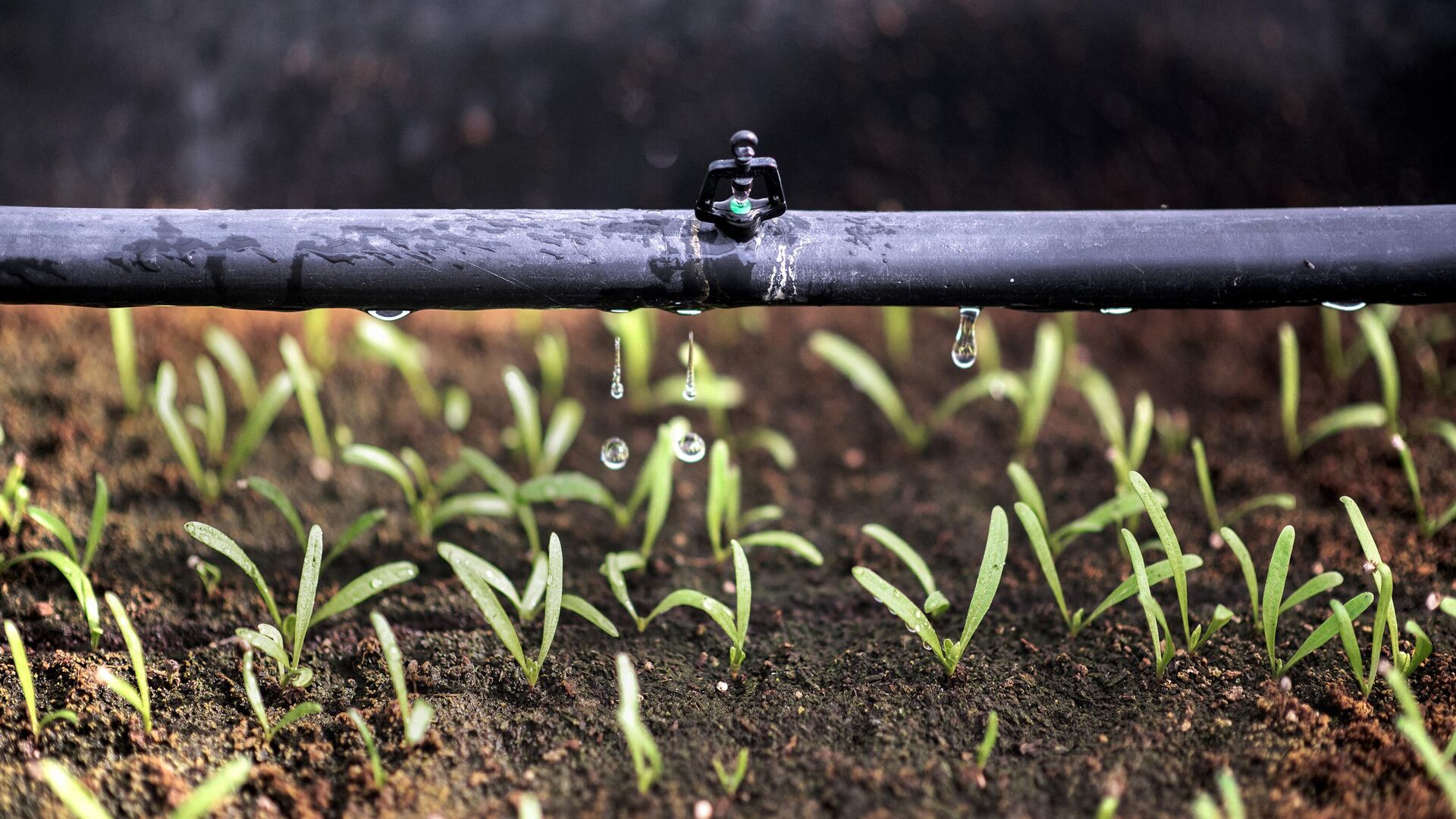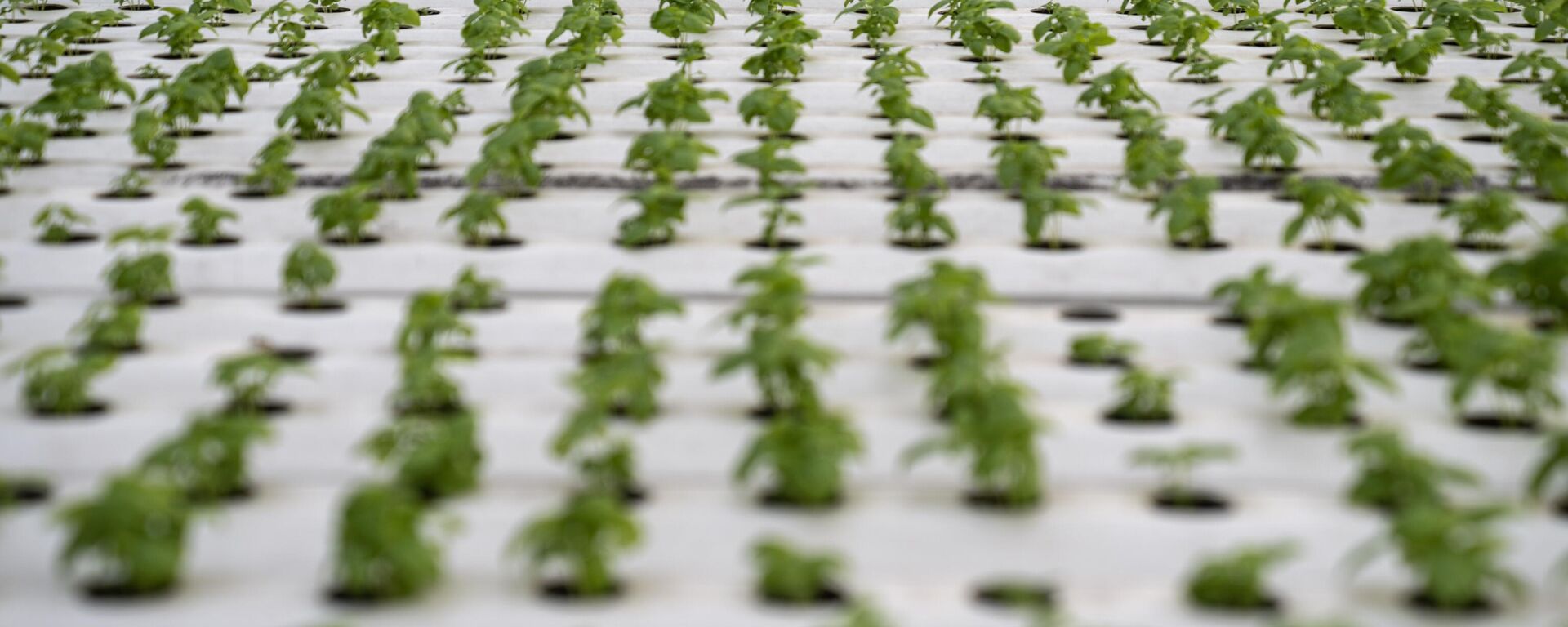https://sputniknews.in/20231226/electrifying-hydroponics-scientists-make-barley-grow-50-faster-5969570.html
Electrifying Hydroponics: Scientists Make Barley Grow 50% Faster
Electrifying Hydroponics: Scientists Make Barley Grow 50% Faster
Sputnik India
Scientists have innovatively incorporated electricity into hydroponics, resulting in a groundbreaking soilless cultivation technique that purportedly enhances the growth of barley seedlings by an impressive average of 50 percent.
2023-12-26T17:12+0530
2023-12-26T17:12+0530
2023-12-26T17:12+0530
science & tech
sweden
world hunger
science & tech
science diplomacy
free foodgrains
agriculture
greenhouses
vegetarian food
climate change
https://cdn1.img.sputniknews.in/img/07e7/0c/1a/5972910_0:320:3072:2048_1920x0_80_0_0_d36b18e50309673b2eea2246be8d89bb.jpg
Scientists have innovatively incorporated electricity into hydroponics, resulting in a groundbreaking soilless cultivation technique that purportedly enhances the growth of barley seedlings by an impressive average of 50 percent within a span of just 15 days.Hydroponics, a cultivation method that eliminates the need for soil, substitutes it with sterile media like rock wool, vermiculite, sand, gravel, clay pellets, and perlite to ensure root stability.This pioneering approach marks a significant milestone, as it introduces electrical stimulation to plant roots within the hydroponic growing medium for the very first time.The hydroponic method allows water to be recirculated. It therefore requires very little water and space compared to other traditional methods. Crops such as lettuce, herbs and some vegetables are already grown in this way. However, cereals have not been used in hydroponics, except in a few cases where they have been used as feed.According to Stavrinidou, the research will expand the range of crops suitable for hydroponic cultivation and demonstrate the potential for more efficient growth with fewer resources."We can't say that hydroponics will solve the problem of food security. But it can definitely help particularly in areas with little arable land and with harsh environmental conditions," the professor concluded.
https://sputniknews.in/20231207/ladakh-introduces-new-technology-to-cultivate-vegetables-in-harsh-cold-climate-5728723.html
sweden
Sputnik India
feedback.hindi@sputniknews.com
+74956456601
MIA „Rossiya Segodnya“
2023
Deexa Khanduri
https://cdn1.img.sputniknews.in/img/07e6/0c/13/138923_52:0:533:481_100x100_80_0_0_cadf23d341691fc65ff2b22fd1afe584.jpg
Deexa Khanduri
https://cdn1.img.sputniknews.in/img/07e6/0c/13/138923_52:0:533:481_100x100_80_0_0_cadf23d341691fc65ff2b22fd1afe584.jpg
News
en_IN
Sputnik India
feedback.hindi@sputniknews.com
+74956456601
MIA „Rossiya Segodnya“
Sputnik India
feedback.hindi@sputniknews.com
+74956456601
MIA „Rossiya Segodnya“
Deexa Khanduri
https://cdn1.img.sputniknews.in/img/07e6/0c/13/138923_52:0:533:481_100x100_80_0_0_cadf23d341691fc65ff2b22fd1afe584.jpg
soilless cultivation, barley seedlings, electrically conductive method, hydroponics, absence of soil, eleni stavrinidou, electronic soil
soilless cultivation, barley seedlings, electrically conductive method, hydroponics, absence of soil, eleni stavrinidou, electronic soil
Electrifying Hydroponics: Scientists Make Barley Grow 50% Faster
Deexa Khanduri
Sputnik correspondent
Science has provided solutions to millions of mankind's problems, exploring everything from outer space to the human body. But can science unlock unprecedented agricultural productivity and end world hunger?
Scientists have innovatively incorporated electricity into hydroponics, resulting in a groundbreaking soilless cultivation technique that purportedly enhances the growth of barley seedlings by an impressive average of 50 percent within a span of just 15 days.
Hydroponics, a cultivation method that eliminates the need for soil, substitutes it with sterile media like rock wool, vermiculite, sand, gravel, clay pellets, and perlite to ensure root stability.
This pioneering approach marks a significant milestone, as it introduces electrical stimulation to plant roots within the hydroponic growing medium for the very first time.
The hydroponic method allows water to be recirculated. It therefore requires very little water and space compared to other traditional methods. Crops such as lettuce, herbs and some vegetables are already grown in this way. However, cereals have not been used in hydroponics, except in a few cases where they have been used as feed.
"The world's population is growing and we also have climate change. So it's clear that we won't be able to meet the planet's food needs with existing agricultural methods alone," says Eleni Stavrinidou, associate professor at Linkoping University in Sweden.
According to Stavrinidou, the research will expand the range of crops suitable for hydroponic cultivation and demonstrate the potential for more efficient growth with fewer resources.
"In this way, we can make seedlings grow faster with fewer resources. We don't yet know how it works, what biological mechanisms are involved. What we have found is that the seedlings process nitrogen more efficiently, but it's not yet clear how the electrical stimulation affects this process," Starvrinidou added.
"We can't say that hydroponics will solve the problem of food security. But it can definitely help particularly in areas with little arable land and with
harsh environmental conditions," the professor concluded.



